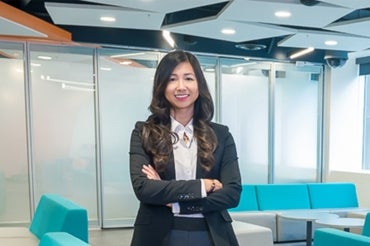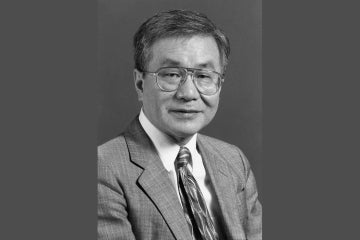Researcher uses AI to understand how healthy older adults are aging at home

Charlene Chu, an assistant professor in U of T’s Lawrence S. Bloomberg Faculty of Nursing, examines the intersections of technology and older adults’ health and well-being (photo by Robert Frost Photography)
Published: October 23, 2023
University of Toronto nursing researcher Charlene Chu wants to know how older adults age at home – and she’s using artificial intelligence to help.
An assistant professor in the Lawrence S. Bloomberg Faculty of Nursing, Chu is examining the intersections of technology and older adults’ health and well-being. Her current research uses a multi-modal AI-based sensor system called MAISON (Multimodal AI-based Sensor platform for Older iNdividuals) to help fill in knowledge gaps in the field.
MAISON uses a wearable watch as well as a variety of sensors such as sleep mats, motion detectors and chair mats to collect information on the wearers’ physiology, including heart rate, blood pressure and quality of sleep. It also detects participants’ levels of activity, including how far they can travel from home.
“We know a lot about older adults who are ill or who have multi-morbidities, but we don’t have much insight into older adults who are aging in positive and healthy ways,” Chu says. “With the rapid advancements in AI and its deployment across multiple sectors, thoughtful examination is required to determine how we can ensure older adults benefit from AI so that no one is left behind.”
Chu is the recipient of a multi-year National Sciences and Engineering Research Council of Canada (NSERC) Discovery Grant, which supports innovation in engineering science. This will fund three interrelated projects including the design and deployment of the MAISON app interface that will help Chu and co-investigator Shehroz Khan, a scientist at the KITE Research Institute, University Health Network and an assistant professor at U of T’s Institute of Biomedical Engineering, develop a database that will provide a nuanced understanding of how healthy older adults age actively in their communities.
The database will be the first of its kind in Canada to include information on the age, sex, gender and socio-economic status of older adults and how this correlates to their ability to age at home.
The overarching goal, Chu says, is to make the database accessible to researchers from around the world, creating the potential for machine learning models to accurately predict outcomes of active aging and inform the design of new technologies – all with older adults acting as key partners in the process.
“These three projects and the app we are creating will be focused on gathering data from people who manage their own health conditions,” says Chu. “We hope to gain a holistic perspective of aging, incorporating feedback from older adults about what they think is important to include in an app that measures their lifestyle and health.”
The detailed information collected by MAISON increases the researchers ability to understand how factors like socio-economic status, geographic location, community features, age, sex and gender impact the aging process, Chu adds. This is important, she notes, because technology for older adults is often subject to bias or digital ageism – problems she has highlighted in earlier research.
“There is a difference between older adults who are 65 versus those who are 75. We cannot lump together everyone who is 55 and older when we design technology and applications for older adults, but this is what is happening now,” Chu says.
The MAISON system and app interface is currently being used to assess and monitor the activity of older adults who have been discharged from inpatient rehabilitation following hip surgery, helping to demonstrate the technical feasibility of Chu’s latest project.
“Digital ageism partially stems from a lack of data on older adults, including poor labelling and lack of access to technology,” Chu says. “With this project I’m hopeful that we will begin to overcome those barriers.”


